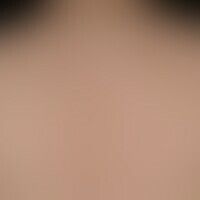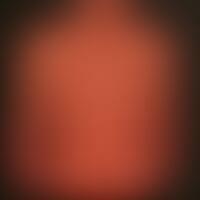Image diagnoses for "red"
875 results with 4455 images
Results forred

Lichen planus vulvae L43.9
Lichen planus of the vulva: itching for months. 35-year-old female patient with veil-like white discolouration of the large labia marked by arrows. Fig. from Eiko E.Petersen, Colour Atlas of Vulva Diseases, with the permission of Kaymogyn GmbH Freiburg.

Squamous cell carcinoma of the skin C44.-
squamous cell carcinoma of the skin: advanced ulcerated carcinoma. previously misinterpreted as a venous ulcer. the carcinoma is palpated as a very firm, little pain-sensitive (!) node, which is hardly movable on its base. a sentinel lymph node biopsy proved negative (no tumor infestation).

Lupus erythematosus acute-cutaneous L93.1
lupus erythematosus acute-cutaneous: clinical picture known for several years, occurring within 14 days, at the time of admission still with intermittent course. anular pattern. in the current intermittent phase fatigue and exhaustion. ANA 1:160; anti-Ro/SSA antibodies positive. DIF: LE - typical.

Pemphigus chronicus benignus familiaris Q82.8
Pemphigus chronicus benignus familiaris: chronic, extremely therapy-resistant, sharply defined, red, marginalized verrucous plaques.

Teleangiectasia macularis eruptiva perstans Q82.2
Teleangiectasia macularis eruptiva perstans. 54-year-old patient with a generalized macular clinical picture which has existed for years and shows a constant progression. Itching in case of heat exposure and mechanical exposure of the affected areas.

Scleromyxoedema L98.5
Scleromyxedema. 52-year-old patient shows a diffuse thickening and discreet reddening of the facial skin. Especially in the area of the glabella there is a bulging overlapping thickening of the skin folds.

Psoriasis vulgaris L40.00

Cheilitis simplex K13.0
Cheilitis simplex. radial rhagades on altogether dry lips. In case of a proven atopic diathesis the cheilitis shown here is considered as monosymptomatic atopic eczema (Cheilitis atopica).

Panaritium L03.1
Panaritium, which developed in an HIV-infected patient approximately 3 months after a previously successful antiretroviral therapy with the protease inhibitor indinavir.

Acrodermatitis chronica atrophicans L90.4
acrodermatitis chronica atrophicans. 57-year-old female patient. skin changes existing for five years now, clearly increasing for half a year, discoloured red-blueish in cold weather. large, blurredly limited, symmetrical erythema (completely anaemic). the skin surface is wrinkled in the breast area (atrophic), otherwise smooth. some splatter-like white discolorations.

Folliculitis perforating L73.8
Folliculitis, perforating. irregular distribution of follicular, itchy papules with a central horn plug in the area of the back.

Steroid acne L70.8

Porphyria cutanea tarda E80.1
Porphyria cutanea tarda: detailed picture; the variety of skin lesions can be reduced to certain features by careful analysis.











